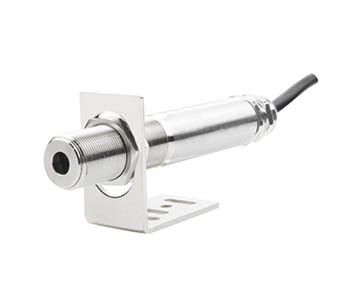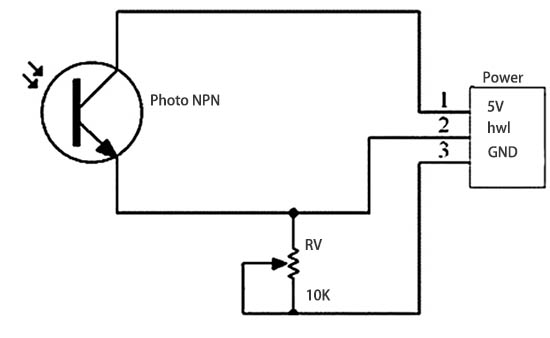How to Maintain Temperature Infrared Sensor?
The temperature sensor converts the relationship between various physical properties of materials and temperature into effective output signals. As the core component of the thermometer, there are many types. According to its measurement method, it can be divided into two categories: contact type and non-contact type. According to the characteristics of its material and device, it can be divided into thermal resistance type and thermocouple type. The current temperature sensor is very small, so it has great applications in many aspects of actual production, which brings a lot of convenience and practicality to our life.
Temperature sensor failure and maintenance method
Errors caused by improper installation
If the installation position and burial depth of the thermocouple cannot reflect the actual temperature of the furnace, that is to say, the thermocouple cannot be placed close to the door or heater, and its burial depth should be 8 to 10 times that of the protective pipe. Since the thermocouple protective sleeve and the wall are not filled with heat insulating material, resulting in heat leakage or cold wind intrusion, so insulating materials such as fireproof mud or asbestos are used to block the gap between the thermocouple protection tube and the furnace wall to avoid the intrusion of cold and hot air.
Convection, thereby affecting the accuracy of temperature measurement. The cold junction of the thermocouple is too close to the furnace body, causing its temperature to exceed 100 degrees Celsius. The installation of thermocouples must avoid strong magnetic fields and strong electric fields as much as possible, so temperature sensor thermocouples cannot be connected with power cables to avoid interference and errors. Thermocouples cannot be installed where the flow rate of the measured medium is small, so when using thermocouples to measure the gas in the pipeline, the thermocouples should be placed in the opposite direction of the flow rate and fully contacted with it.
Error caused by insulation deterioration
If the thermocouple is insulated, a protective tube and a wire plate are required to prevent poor insulation between the thermocouple and the furnace wall. The insulation is more serious at high temperature, which will not only cause the loss of thermoelectric potential but also introduce interference, and the error caused by it can sometimes reach hundreds of degrees.
Errors introduced by thermal inertia
The thermal inertia of thermocouples causes the temperature displayed by the instrument to lag the temperature being measured, so it is especially effective when making fast measurements. Therefore, try to choose a thinner thermal electrode and a smaller diameter of the protective tube. The protective pipe can also be removed if the temperature conditions permit.
The temperature change detected by the thermocouple is smaller than that of the furnace because of the measurement delay. The greater the measured delay, the smaller the range of temperature difference and the greater the difference from the actual temperature. Using a thermocouple with a large time constant for temperature measurement or control, the temperature displayed on the instrument changes little, but the actual temperature fluctuates greatly.
So if you want to measure the temperature accurately, you must choose a thermocouple with a lower time constant. The time constant is inversely proportional to the heat transfer coefficient and is closely related to the diameter of the hot end of the thermocouple, material density, and specific heat. To reduce the time constant, in addition to increasing the heat transfer coefficient, the most effective way is to reduce the volume of the hot end of the thermocouple.
In practical applications, protective sleeves with good thermal conductivity, thin walls, and small inner diameters are generally selected. In high-precision temperature measurement, a bare wire thermocouple is used without a protective cover, but the thermocouple is easily damaged and needs to be corrected and replaced.
Thermal resistance error
When the temperature is high, if a layer of soot is covered on the surface of the protective pipe, the dust will adhere to the surface of the pipe, which will increase the heat transfer resistance and affect the heat transfer. At this time, the temperature indication value is lower than the actual value of the measured temperature. Therefore, in order to reduce errors, the outside of the thermocouple must be cleaned.
The main purpose of the temperature sensor
In industrial and agricultural production, temperature is a very important and common parameter. Temperature detection and control are of great significance to ensure product quality, improve production efficiency, save energy, produce safely, and promote the development of the national economy. Due to its wide application, among all kinds of sensors, the number of temperature sensors is the largest, accounting for about 50%.
A temperature sensor indirectly measures certain properties of an object as its temperature changes. The properties of many materials and components change with temperature, so there are many materials that can be used as temperature sensors. The physical parameters of temperature sensors include expansion, resistance, capacitance, electromotive force, magnetism, frequency, optical and thermal noise, etc. With the development of production, more and more new temperature sensors will appear.
Due to the wide range of temperature measurement in industrial and agricultural production, ranging from hundreds of degrees below zero to thousands of degrees below zero, thermometers made of different materials can only work in specific temperature ranges.
The contact mode between the temperature sensor and the tested medium can be divided into two types: contact type and non-contact type. The contact temperature sensor must maintain a certain thermal contact with the material to be measured, and conduct sufficient heat exchange at a certain temperature. This type of sensor includes resistance type, thermocouple, PN junction, etc.
The non-contact infrared temperature sensor does not need to be in direct contact with the measured medium, and it can use the heat or convection of the measured medium to transfer to the temperature sensor. This type of sensor is dominated by infrared thermometers. The biggest feature of this temperature measurement technology is that it can measure substances in an active state (such as the temperature of a slow-moving train bearing, the temperature in a rotating cement kiln) and objects with low heat capacity (such as the temperature distribution in an integrated circuit). )
The temperature sensor is realized by converting the relationship between the various physical properties of the material and the temperature into an effective output signal. Usually, the temperature sensors of the car are installed in the front of the engine, water tank, and inside the bumper. For the sake of safety, the car should pay special attention to the safety of the car when driving. This is not only a responsibility to oneself, but also a responsibility to others.

